Your daily dose of Product Management Goodness
Want to know more?
We would love to hear your questions and suggestions for topics you would like to see covered in our future blog posts, so don't be shy and get in touch!

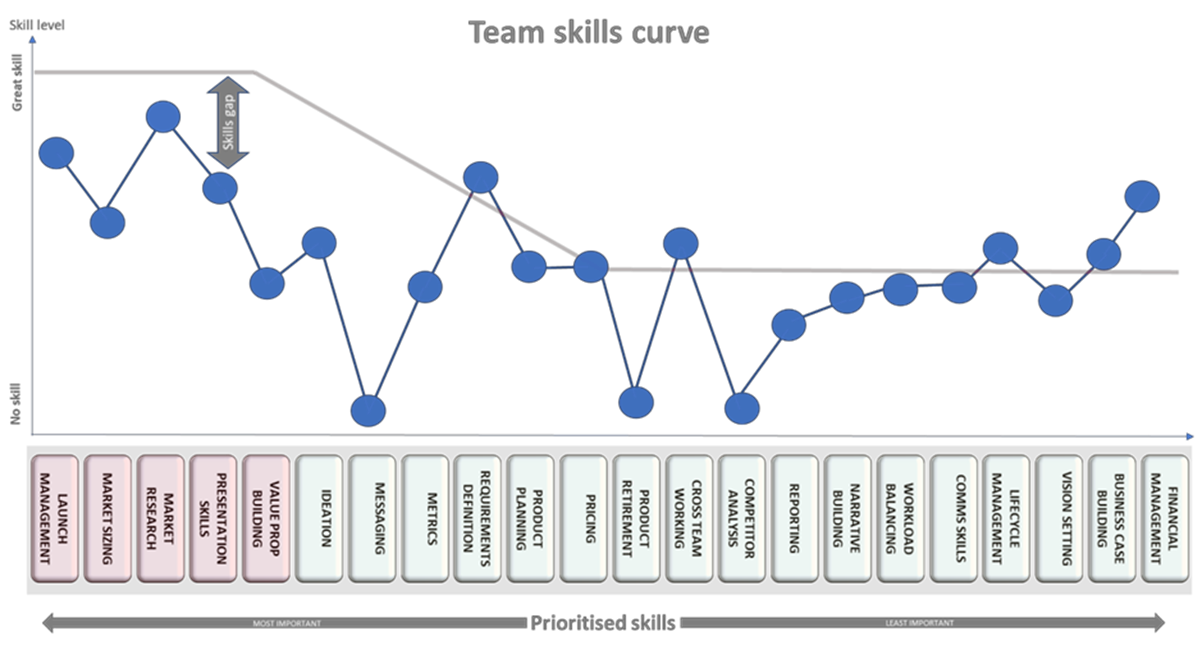
Refining your PM Skills
We’re half way through the year- a good time to reflect on team performance. When thinking about the performance of a product management team it’s way too simple to describe it as great, or terrible, or somewhere in between. It’s better to break it down into skills – what do they do well and where do they need support. It’s even better to prioritise those skills around business need. We use the skills curve to do this – prioritise the skills the team need to have, review their capability per skill, build out the skills curve, then focus on closing the gaps around the skills that will make the biggest difference.
read more
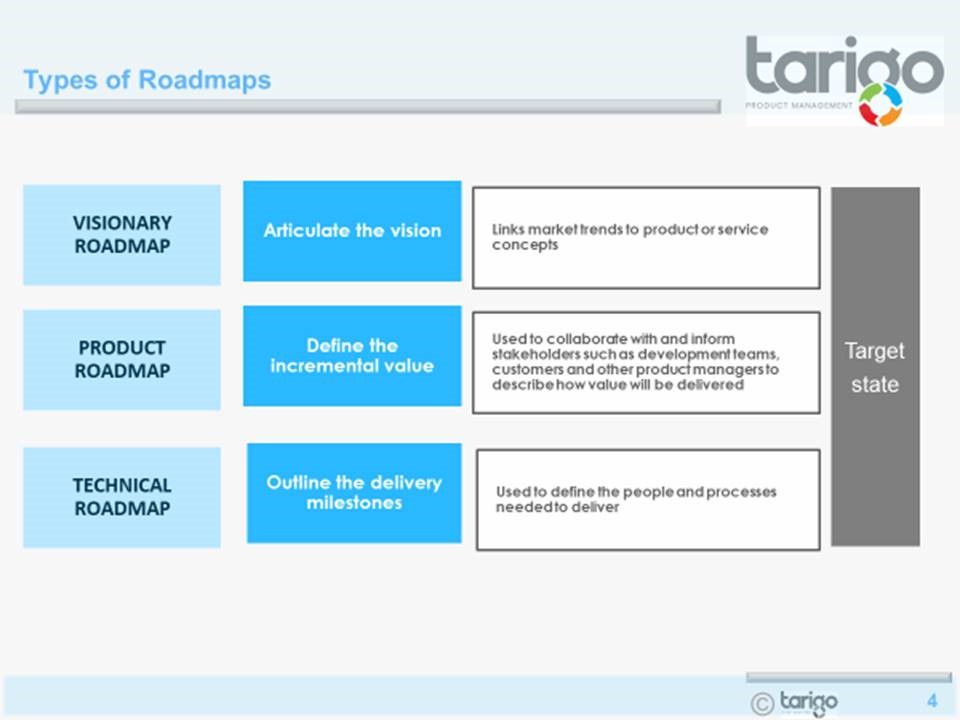
What is a roadmap?
Product Managers are often requested to build out a roadmap. Our first response should be ‘Which Roadmap?’. We identify three roadmaps:
1. The Visionary Roadmap – A broad brush view of where your products need to go over the next 5/10 years based on market mega trends. It sets the direction of travel.
2. The Product Roadmap – It takes the vision and breaks it down into tangible customer deliveries . It defines how value will be delivered and identifies the major landmarks on our journey to our vision
3. The Technical Roadmap – It adds detail. It describes how we get to each major landmark identified in the Product Roadmap, the people involved, etc. It tells us how we’ll make our journey to vision.
All three clearly link together. We start with the Visionary Roadmap. Without it, our product direction can’t be set.
read more

Defining the product value curve
When you book a hotel room how do you decide which hotel to book? Price? Location? Points? Facilities? The likelihood is that you choose based on a number of reasons rather than just one. We can use this insight to help position our own products more effectively. The Value Curve is a tool that maps buying factors vs execution. Simply list the top 5 reasons customers choose a product in your market, work out how well you execute against that need and do the same for your competition. You can then see where to refine your offer.
read more
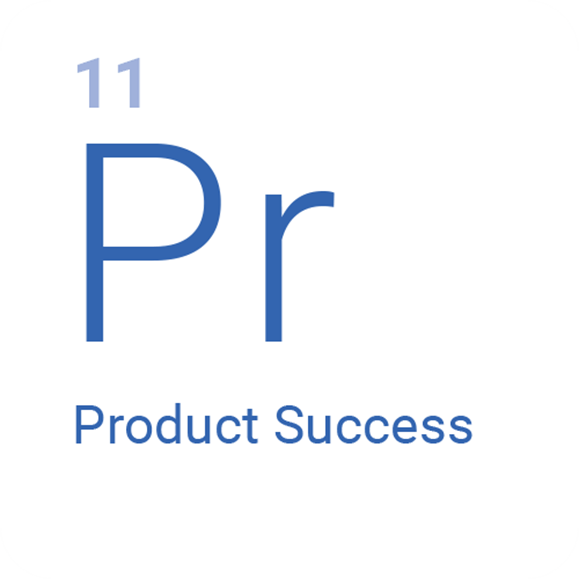
Defining product success
How would you define product success? Revenue? Profit? Volume? The point is this; product success comes in many flavours that do not always directly link to a simple financial metric. A product portfolio can often be thought of as a team, where products perform different roles. Think of HP – printers make ink sales possible. Or google; its search engine is an enabler for its AdWords business. Like a soccer team would not be great if it was made up of 11 strikers, a product portfolio needs balance.
So when looking at what constitutes product success, think about the role your product needs to play in your product team.
read more

Skills Matrix
Welcome to the Tarigo Product Management Skills Matrix.
A useful & easy-to-use tool designed for Product Managers who would like to assess their current levels of knowledge, expertise and skills.
Once completed it can then be used to identify personal development plans and build a successful and rewarding career.
• Rate your personal competencies against those found in high performing product teams
• Identify your aspirations in terms of your competency targets and the associated gap analysis
• Put together a plan of action to develop yourself in order to meet your aspirations.
See the full paper on our website under resources.
read more
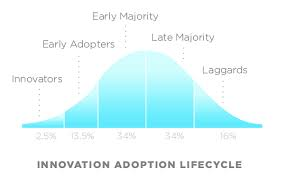
Revenue Forecasting
A question from a the head of a product team I’ve been training “Are there any quick tips for helping the team with revenue forecasting?” The background to this was a very frustrated leadership team who had been presented with revenue forecasts that turned out to be orders of magnitude different to actuals. My one quick tip would be this – DON’T FORGET LIFECYCLE STAGE! Most Product teams get the basics right in terms of understanding the available and serviceable market. The bit they miss is that they need to overlay the lifecyle stage to get a sense of adoption rates. For example, take a market with £100M in revenue potential. At the innovator stage circa 2.5 – 5% of that market is likely to adopt. Think that sounds severe? Look at the plug-in electric car market and you’ll see a market share of 2.53% here in the UK.
read more
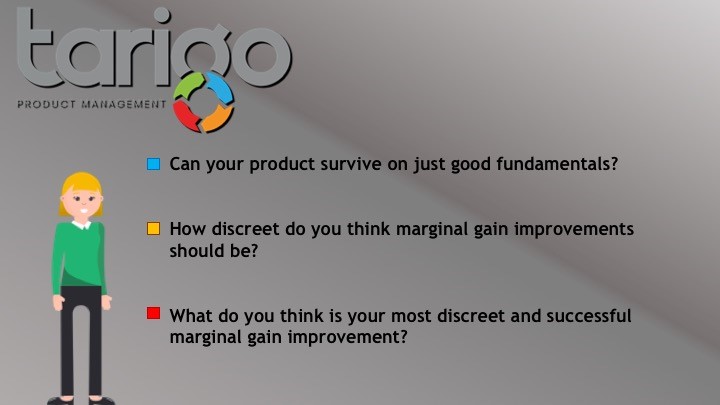
Marginal Gains
Marginal Gains – make them invisible!
Marginal Gains is a popular topic at Tarigo and in the product management world in and we want to hear your thoughts on the topic!
It’s a great model to teach and understand as there are plenty of success stories and examples that we can look at in the product world to help explain product success and why certain products always seem to beat competitors!
Team Sky publicly displayed their passion and focus on marginal gains and claimed it was the reason for much of their Olympic success. Well Olympian and Tour De France winner Sir Bradley Wiggins disagrees. ‘I just think you have got to get the fundamentals right: go ride your bike, put the work in, and you’re either good or you’re not good.’ He was involved in the GB squad during the Sir Dave Brailsford revolution. He also has a gold medal from the 2012 Olympics…
Is this a case of conflicting attitudes or were the marginal gain techniques employed by team GB so subtle that an athlete such as Wiggins didn’t even notice the positive impacts these marginal gains had on his performance.
What do you think?
read more
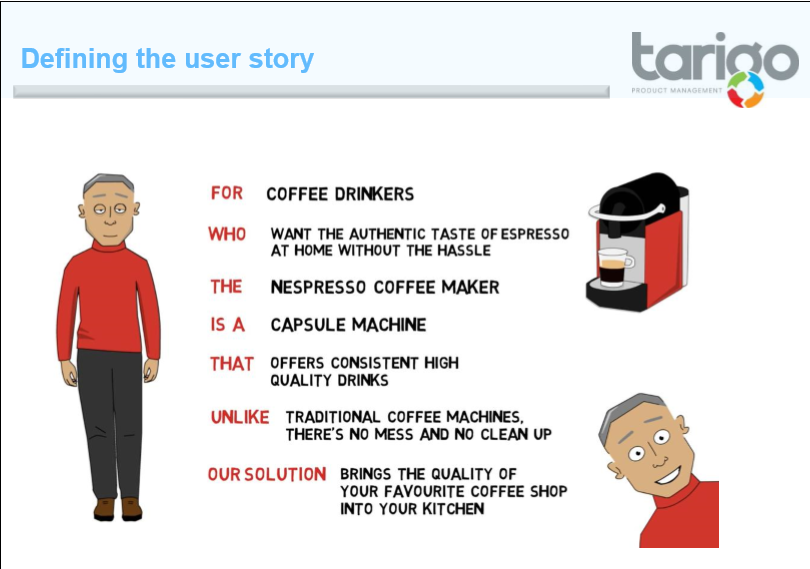
What’s your product value?
Product managers should be able to articulate the value of their product to the target market in a concise, coherent and compelling way. Here’s the value proposition template with Nespresso as an example. Simply replace the black words with your own to build your value statement.
read more

How fast is too fast?
The dev manager of a team I’m working with at the moment has proudly announced that their new dev model has enabled them to release new code daily. The whole organisation is wowed by this, but no-one seems to have asked the question ‘Why?. The point is this; these guys work in the highly regulated and security-conscious world of banking. To an IT director the idea of daily software updates is the stuff of nightmares. As always, with anything to do with product, know your customers and build solutions (including delivery models) that work for them.
read more
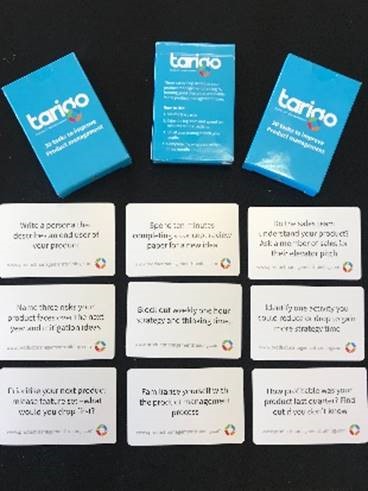
Building the habit.
Want to change part of your life? If you do something for thirty days it becomes a habit. It can help people stop smoking, start exercising - break or make habits in your daily routine We use this to help Product Managers build the right discipline - thirty small tasks for the product manager to complete over 30 days. We deliver this as a card deck and once per day email. Want to try it? Drop us a note at info@tarigo.co.uk
read more
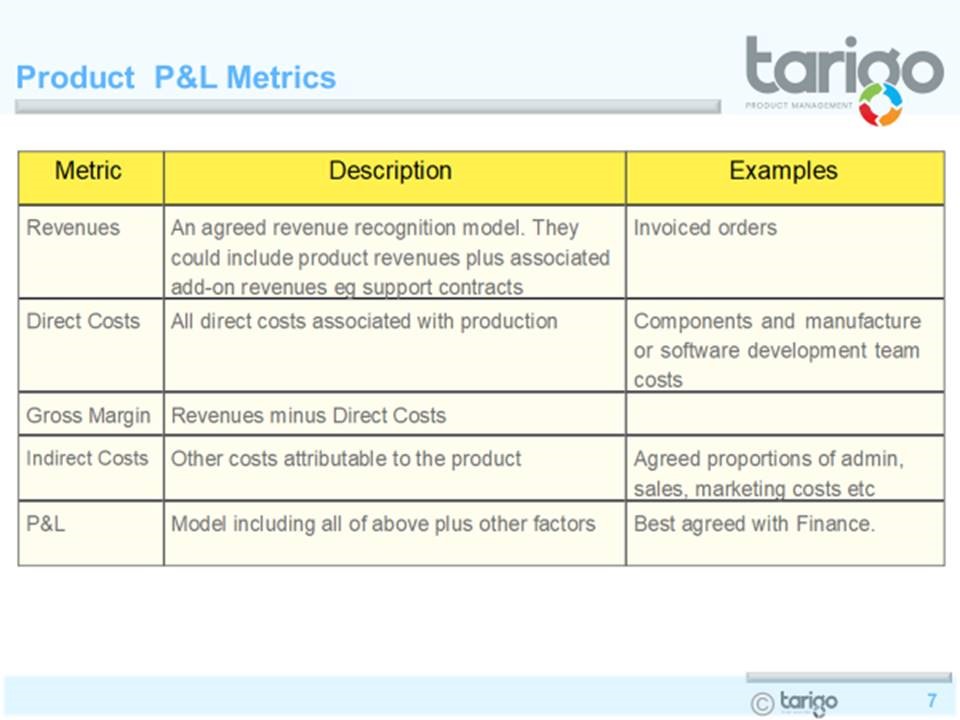
Metrics.
Over the next few days we’ll revue the key metrics that help you track and measure your product. We break these down into 5 categories:
• Product P&L
• Market
• New Business
• Customer
• Other
Starting with Product P&L, these are the key high level commercial and monetary metrics associated with managing your Product as a Business (PaaB). This could include revenues, costs, both direct and indirect and a resulting profitability measurement. These metrics are best worked out in collaboration with finance.
What metrics do you use to track and measure products?.
read more
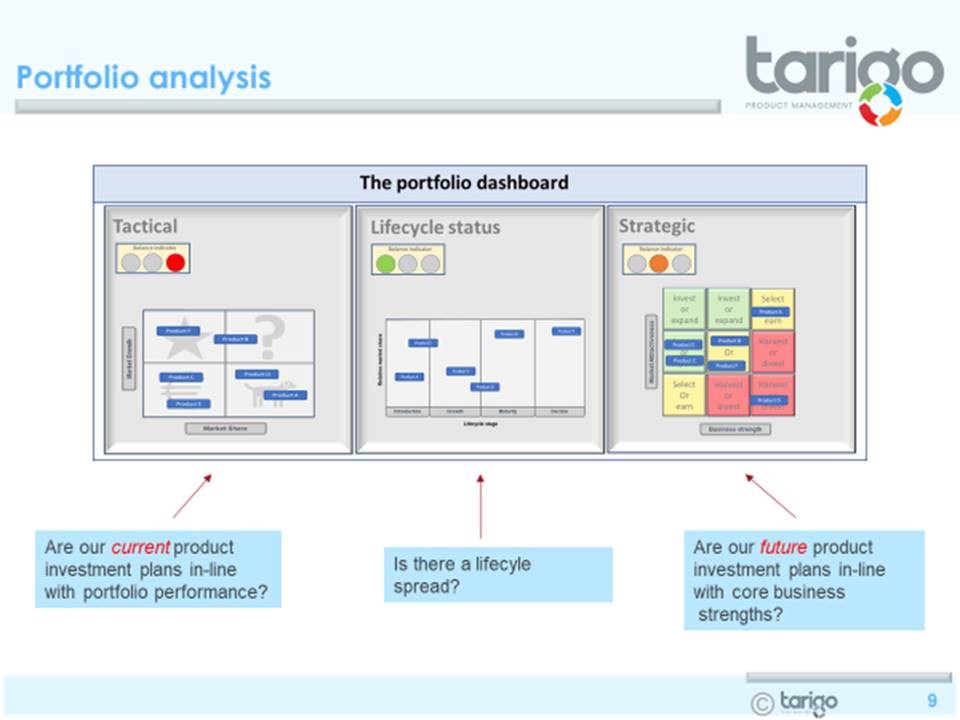
Portfolio Analysis
Here’s a tool we use for portfolio review. It enables you to look at your product portfolio through three lenses:
Tactically. We use a BCG matrix to assess whether our current product suite is in the right shape. For example, low-share products in no-growth markets are probably best removed.
Lifecyle. We plot our products in terms of stage of life cycle. For example, if your product suite clusters around late-stage growth you might be generating great profits today, but could feel portfolio-wide communication soon.
Strategically. Are the markets you are in likely to remain attractive and do you have capability to win in those markets. We use a multi-factorial matrix to answer this.
read more
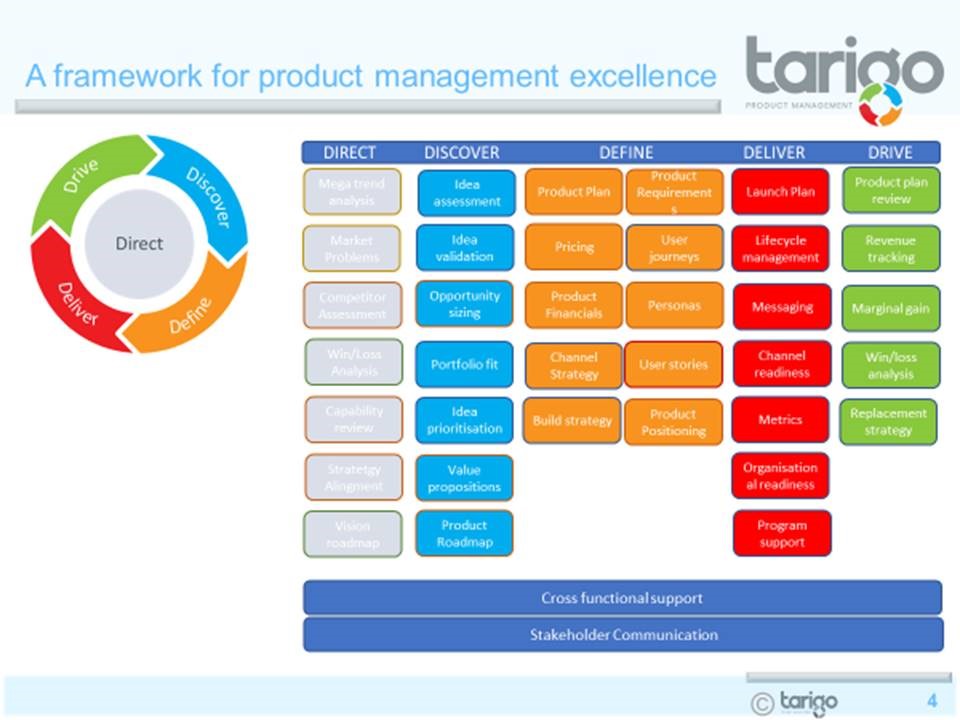
Major Tasks
What are the major tasks for a Product Manager?
We’ve built this framework that describes what we need to think about throughout the product delivery process. The 5D process defines the point in the delivery cycle (From Direct, where we set product strategy, to Drive, where we use marginal gain to enhance our in-market product), and the blocks beneath describe the major activities. The framework is a useful tool to make sure you’re not missing anything major on your journey to Product Management Excellence!
read more

Product Narrative
What’s the narrative of your product?
We’ve had President Trump in the UK this week. I guess it’s fair to say he is a figure that generates a wide emotional response wherever he goes. But love him or hate him, he has a skill around messaging that serves him well. He’s a world-class narrative builder; Ask the question “What does Donald Trump stand for” and you get immediate response “Make America great again”, “Build the wall”, “Drain the swamp”. Ask the same question about his rival Hilary Clinton and the room goes quiet. You can love or hate the message, but he gets it out there.
This translates into Product. What’s your product narrative? What do your customers think your product stands for?
read more

iTunes is dead.
Apple have announced that iTunes will be absorbed by the release of new and dedicated apps that will handle different media types separately – Apple Music, Apple Podcast, Apple TV.
From a product perspective, Does this make sense? & what considerations might have affected this change in direction?
Firstly, Apple music isn’t new. But it hasn’t been met with the same success that iTunes had when it was introduced. Perhaps this is the reason for dissolving iTunes – Apple music has traction already, but never matched up with its main competitor, Spotify. This move from Apple means that they are able to better influence the on boarding of users by pushing them closer to the streaming platform.
The Apple TV and Apple Music names are newer and are already associated with products mores modern then that of iTunes and the decoupling of different media types feels like a brand update as well as a bit of a tidy up. Maybe this will allow there to be more focus on each platform, and therefore a better user experience!
Let us know what you think of this strategy from a product management perspective. Maybe we can come up with a better way to achieve the same goal!
read more
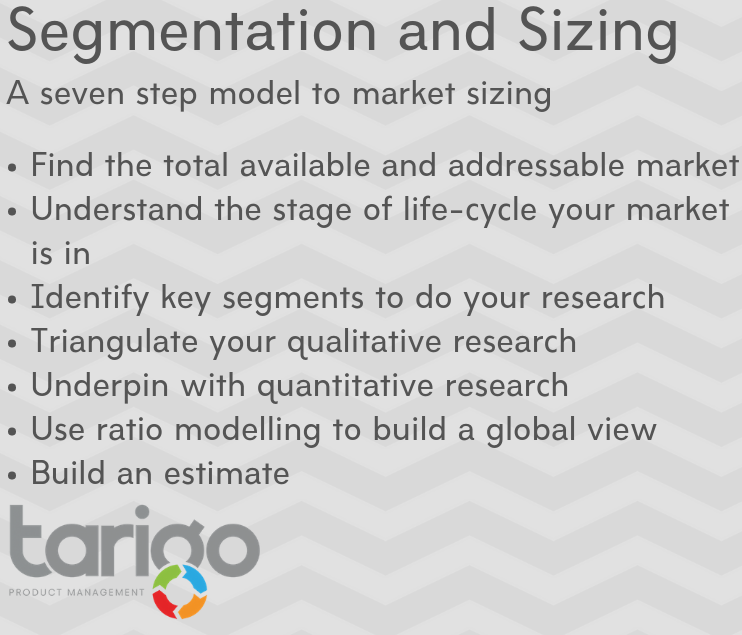
Revenue Forecast
Remember in school when you did a maths exam. You didn’t 100% for just getting the correct answer - you had to show your method and working. Same’s true in product management. When you build out your revenue forecast the answer can’t be a simple £100M! You need to show your working. Here’s our seven step model that helps put structure around forecasting.
read more
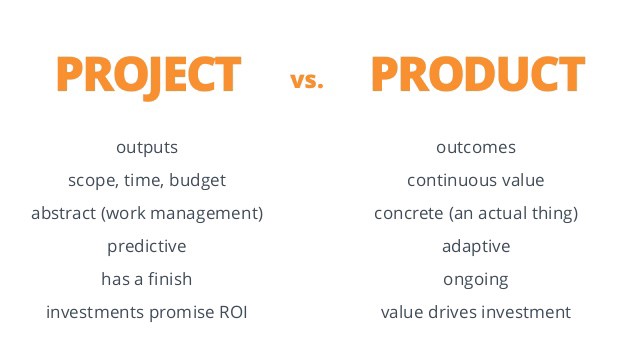
Project vs Product Manager
Project manager and Product manager.
Our names are almost the same, so what’s the difference in these roles?
A project manager focuses on the project - making sure we deliver on time, on budget, on quality, etc.
A product manager focuses on the product - making sure the features and functions map to market needs.
We need each other to work well.
read more
Check out the Archive